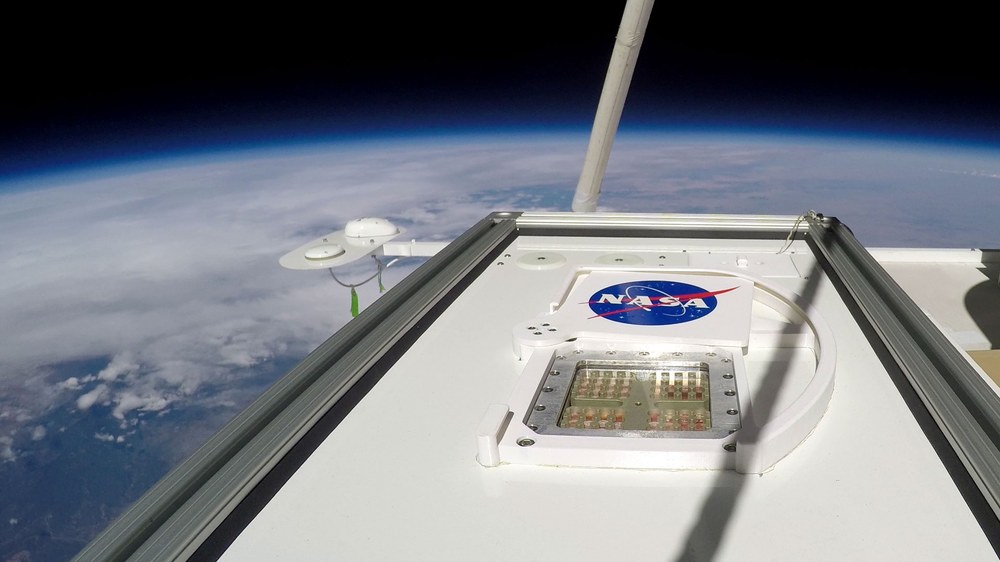Which will survive? A microorganism zoo in the stratosphere



- DLR microbiologists have sent bacterial and fungal samples into Earth's stratosphere using a NASA high-altitude research balloon
- Moulds survived the harsh temperature, radiation and low-pressure conditions much better than bacteria.
- Some of the organisms underwent testing outside the protective troposphere for the very first time
- Focus: Space research, microbiology, astrobiology, spaceflight, exploration, space medicine
In September 2019, astrobiologists from the German Aerospace Center (Deutsches Zentrum für Luft- und Raumfahrt; DLR) sent an entire 'zoo' of microorganisms, such as bacteria and moulds, on a nine-hour journey up to 30 kilometres above Earth. They travelled under a stratospheric balloon operated by the US space agency NASA for the 'Microbes in Atmosphere for Radiation, Survival and Biological Outcomes Experiment' (MARSBOx). At this altitude, the protective effects of Earth's atmosphere are greatly reduced, and the temperature, radiation and pressure are similar to the conditions found on Mars. The DLR team has been analysing the MARSBOx samples over the last few weeks and the preliminary biological findings are now available. These show that most of the bacteria have been killed, with the strong ultraviolet radiation proving to be particularly problematic for them. Only a few staphylococci – human pathogens – survived the journey. In contrast, mould spores survived better under the extreme conditions in the stratosphere.
"Research has been conducted into bacteria in space since the Apollo missions. Fungi are also considered to be space-relevant organisms. However, research into them is only in its very early stages," says Ralf Möller, a microbiologist at the DLR Institute of Aerospace Medicine in Cologne. His team collaborated with NASA's Ames Research Center on the stratospheric flight, affording them the opportunity to fly a sample holder easily and inexpensively. Many of the bacteria and fungi were tested at high altitude for the first time.
Möller has an explanation for the greater resistance of moulds to these extreme atmospheric conditions: "In order to proliferate, moulds form spores that are highly resistant to extreme conditions such as dryness and radiation. In addition, fungi have very efficient protective mechanisms against radiation, such as strong black pigmentation and effective DNA repair. Although many bacteria have similar properties, the mould spores are much more resistant to the extreme Martian conditions than the bacteria that we tested. The results demonstrate how important it is to continue with research into microorganisms, particularly fungi, and their survival properties in space – not least in the interests of the health of astronauts on long-term missions to space stations, and later to habitats on the Moon and Mars."
Microorganisms – a challenge for space travel
Bacteria and fungi are part of nature and human life. Whether they live on the outside of our bodies – on our skin – or inside us, many species are harmless, and some are even useful. But there are also varieties that can be dangerous to humans and cause serious diseases. These pose invisible dangers to space travellers on space stations or on future journeys to outposts on other planets. The matter of 'planetary protection' must also be considered. If landers, rovers or other space vehicles carrying bacteria or fungi set down on planets and celestial bodies, they could contaminate the surface.
Research into microorganisms under space conditions is ongoing. As early as summer 2020, samples for a major test campaign will be transported to the International Space Station (ISS) to investigate how they are affected by microgravity conditions in the short and long term.
